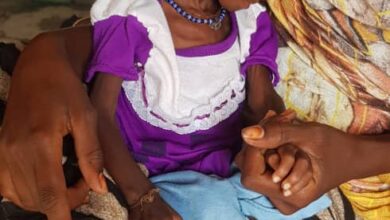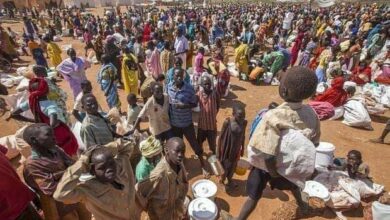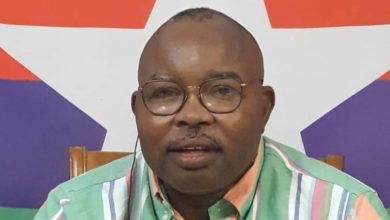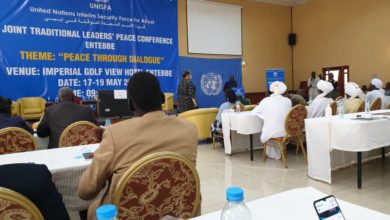Ugandan researcher turns water hyacinth into animal feeds, organic manure
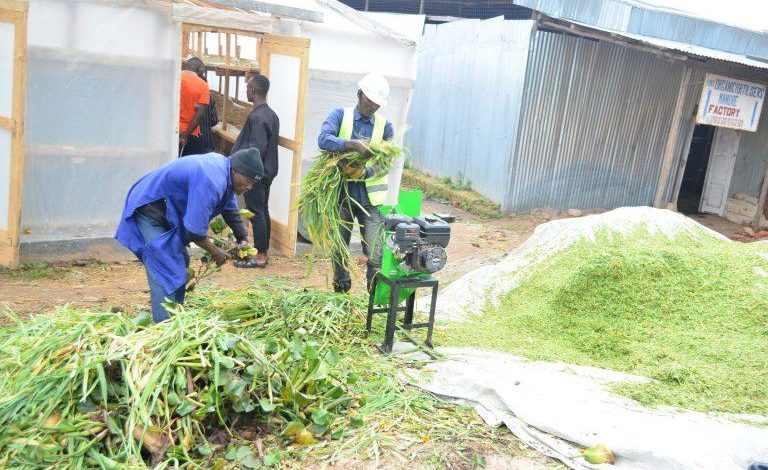
Press/slma
ByJAVIRA SSEBWAMI
BUSHENYI – In offering local farmers cheap animal feeds while dealing with the menace of the hyacinth, a Ugandan researcher and entrepreneur is ‘turning problems into products’.
Eng. Justus Sande, the proprietor and the Managing Director of JUMOL AGROTECH Services Limited in Bushenyi District, Southwest of the country is converting water hyacinth into organic manure and animal feeds
He extracts the water hyacinth, a free-floating perennial hydrophyte plant that grows ubiquitously in natural water bodies in the tropics including River Rwizi, and is considered one of the most productive on earth and the worst aquatic weed over its high vegetative growth, making it a serious threat to biodiversity.
Hyacinth grows rapidly as a dense green mat over stagnant water bodies such as lakes, streams, ponds, waterways, ditches, and backwaters and is recognized by its lavender flowers and shinning bright leaves.
On the other hand, when considered as a resource, Sande says water hyacinths are very valuable, with several unique properties including being highly nutritious to animals and gardens when rightfully converted into organic manure.
“The environment is conserved by utilizing the water hyacinth as it is seen as a problem and turning it into a product, and at the same time farmers are being helped to keep in production,” says Sande.
Animal feeds
Sande whose research has been rotating around dairy farming for the past 12 years, trains farmers with different technologies regarding production and productivity. The training usually lasts for six days.
“Here [at JUMOL AGROTECH Services Limited], we add value to pastures and soft grass, we blend them to give the collect formulas which would be vital for young animals and birds”, he says, adding, noting that his research specifically seeks to address grey areas in dairy farming, a sector he says has faced several productions and productivity challenges for many years.
Eng. Sande whose bankable nature solution was inspired by Makerere University whom he still works in close touch to formulate the feeds vital for the targeted animals says water hyacinth is got cheaply from River Rwizi to help farmers to access cheap feeds and organic fertilizers while cleaning water bodies.
He blends soft grass, water hyacinth, Setaria, a widespread genus of plants in the grass family, and soya to make the calves’ feeds.
By doing this, he says the formula targets the soft stomach of the calf. “We are looking at farmers who are in dairy farming, giving them something easy and nutrients for the calf.”
For pig feeds, the approved formula dictates that he mixes water hyacinth, potato vines, soya, and sunflower. Other ingredients include maggots and maize grain to make nutritious pig feeds.
He says pig feeds are turned into pellets and each kilogram is sold at UGX.3000.
Sande’s farm has helped many farmers in Western Uganda to access animal feeds and fertilizers at a cheap price.
Organic manure
As organic fertilizer, Sande says water hyacinth produces pathogen-free rich compost which increases soil fertility, thereby improving the soil due to its low and narrow margin carbon with a lignin content of only 9 percent.
Its roots can absorb plant nutrients and keep them into its trunks and leaves, which improves the physical properties of soil, soil structure, ventilates the soil, and makes it easy for water percolation.
He says water hyacinth has broad leaves and that it is a heavy feeder.
“Remember these lakes and rivers into these water hyacinth is got, are collecting centers for nutrients from gardens. When humus is moving into these rivers it is captured by the roots of water hyacinth. It only grows in an area where is getting daily fresh nutrients and the nutrients it picks from the water, it is what it stores within its body system and it is from it that where we get it, process it as you see in the machines.”
“After milling it together with other pastures, we dry it and come up with the powder. Then at that level, we mix formulate it according to a particular purpose.”
“After removing it from the lake, using it to make feeds and natural fertilizers (humus), the nutrients which were taken from the gardens and taken up by the water hyacinth and disturbing both the water and fishing industry, when we extract from the river or lake, process it into a product, it is got cheaply to help the farmers be able to access feeds and fertilizers which are cheap such that environment is conserved by cleaning water bodies but at the same time helping farmers to keep in production.
Water hyacinth can be used either as green manure or compost, which may be either plowed into the ground or used as mulch to cover the soil surface while growing crops.
Sande mixes the water hyacinth with the wild sunflower, human and animal urines, Charcoal, and milled animal manure including goat droppings stored into a tanker to allow microbial decomposition to take place, which breaks down fats, lipids, proteins, sugars, and starches into humus.
The mixture is left to produce rich pathogen-free compost that can be applied directly into the soil.
Once applied, Sande, says the compost increases soil fertility and crop yield and generally improves the quality of the soil. Currently, many innovative farmers are replacing the expensive inorganic fertilizer such as DAP, 23:23:0, and CAN with such manures from water hyacinth.
The manure also contains many trace elements (FE, Zn, Mn, and Mg), which are rarely found in inorganic fertilizers.
The components help plants to be more disease resistant and enhance the quality of products mainly fruits and vegetables.
He says recommended the use of water hyacinth as a source of manure as it will help reduce its environmental hazards such as degrading water quality, curtailing reduction in water movement, clogging of irrigation, hindrance of water transport, blockage of canals and rivers causing flooding.
Challenges
“The electricity is very expensive, there is when we have big orders and we are shut down. At times it comes when it is in a single phase for people who use it for lighting but not for industrialists to work,” says Sande urging the government to reduce the cost of electricity for people who use three-phase power that would help them, especially in the farming community to meet with what the farmers can afford to buy.
Sande whose company employs up to twenty people in different stages of production including marketing called for sensitization of the communities about the new innovations adding that many of the farmers have remained stuck in substance agriculture.
Key among other challenges are the very expensive machines used in both feeds and fertilizer production adding that when there is a breakdown “we will have to buy the spare parts from Kampala”.
He further reveals that when they calculate the cost of inputs it makes the product very expensive. One of the machines they use in animal feeds production cost UGX60m. The capacity of the machines is 10 tonnes of feed per day depending on the demand.
The company mainly supplies its products to local farmers in Western Uganda with up to 50 constant farmers. At least 30 others have also enrolled for pig feeds and organic manure but some still protest the price.
“A product mixed with fish, maize grain, and molasses is sold at UGX 3000 per kilogram, but some people want to buy it at UGX700 comparing it with maize brand which is sold at UGX700,” he says adding that a lot of sensitization is still needed.
DFCD support
The Dutch Fund for Climate and Development (DFCD) through the World Wide Fund for Nature Uganda Country Office (WWF-UCO) who are implementing a series of projects in the Greater Virunga Landscape has approved a grant of up to Euro 38000 over UGX 152 million to support JUMOL AGROTECH Services Limited establish a sustainable stock, feed and mature formulation.
Sande says he also used part of the funding to study the market and financial projections, stakeholder engagement, and to develop a light Environmental and Social Impact Assessment (ESIA) report.
Harold Turinawe, the WWF Forest Markets Transformation Manager and Manager DFCD project in Uganda said the funding programme is in direction of achieving the long term objective of ensuring that Uganda is following a low carbon development pathway and has resilient forest landscapes, wildlife populations, and freshwater ecosystems that support biodiversity and socio-economic transformation of communities.
“We need to work with companies, financial institutions, and local stakeholders to develop Bankable Nature Solutions (BNS). This way, we can deliver impacts that reduce pressure on ecosystems, drive resilience and sustainability for both people and nature, while generating positive financial returns for communities and investors.”
He said the DFCD project, identified Greater Virunga Landscape as one of WWF’s five priority African landscapes, and that it seeks to establish a coalition of partners engaged in landscape and water development to set up a market-led bottom-up, people-centered holistic approach to conservation and development at the landscape level.
The DFCD landscape approach proposes to use an innovative financing approach to achieve conservation through enhancing sustainable markets and value chains in land and water products to achieve sustainable landscapes.
The bankable solution approach also involves collaboration among multiple stakeholders, with the purpose of achieving sustainable landscapes
UG Standard


